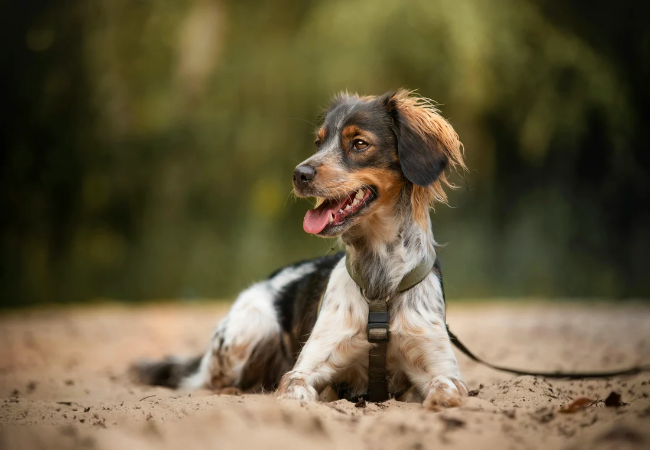Vet Guide 2025 Why Dogs Pant Health, Stress & When to Worry 🐶🩺

In this article
Vet Guide 2025 Why Dogs Pant Health, Stress & When to Worry 🐶🩺
By Dr. Duncan Houston BVSc
Panting is one of the most common behaviors in dogs—but it’s also a vital hint into their physical and emotional state. I’m Dr Duncan Houston BVSc, and here’s your definitive guide to understanding panting: why it happens, when it’s normal, when it’s dangerous, and what tools from Ask A Vet.🐾
1. What Is Panting?
- Rapid, open‑mouth breathing—tongue out—is how dogs cool down and regulate body heat.
- Unlike humans, dogs don’t sweat across their skin—instead, they lose heat through their respiratory tract, tongue, and paw pads.
2. Normal Causes of Panting ✅
- 🌡️ Heat relief—after exercise or on warm days, panting helps reduce core temperature.
- 🏃♂️ Physical exertion—following play or walks, panting occurs naturally.
- 😃 Excitement or happiness—happy panting may come with wagging and relaxed body posture.
- 😮💨 Stress or anxiety—situational panting during storms, vet visits, or travel.
3. When Panting Signals Medical Concern 🆘
- 🌡️ Heatstroke—heavy panting, red gums, collapse requires immediate cooling and vet care.
- 💔 Cardiac or respiratory disease—heart failure, pneumonia, bronchitis, or airway obstructions often present as rapid panting at rest.
- 🩺 Pain or discomfort—abdominal issues like pancreatitis, injury, or surgery can trigger panting.
- 🧬 Endocrine issues—Cushing’s disease and anemia cause panting due to metabolic disruption.
- 🌫️ Brachycephalic symptoms—flat-faced breeds pant more due to airway structure and heat intolerance.
4. How Much Panting Is Too Much?
- Normal resting rate: 15–35 breaths per minute. Rapid panting—over 40/min—without reason is concerning.
- Panting should ease when cool or at rest; persistent or noisy panting needs evaluation.
5. What You Can Do at Home 🏠
- 💧 Cool down—move to shade, offer fresh water, use fans.
- 🍦 Wet limbs and underside to lower body temperature in heatstroke scenarios.
- 🧳 Manage stress/pain with calming tools: Woopf anxiety wraps, Purrz calming chews, soothing mats.
- 🐾 Monitor respiration—count breaths during rest; record if above normal for Ask A Vet review.
6. When to Contact Ask A Vet
Seek immediate advice via the app if your dog shows:
- Resting panting > 40 breaths/min or labored breathing.
- Panting with lethargy, vomiting, coughing, and pale/bluish gums.
- Frequent panting episodes without an obvious cause.
7. Veterinary Diagnosis & Treatment
- Diagnostics: physical exam, bloodwork, chest X-rays, cardiovascular assessment.
- Treatments vary: fluid therapy, oxygen, heart meds, antibiotics, pain relief, surgery, cooling, and anxiety protocols.
- Follow-up: behavior training and medication may be needed for chronic or repeated panting issues.
8. Prevention & Routine Checks
- 🏖️ Be cautious in heat—avoid midday walks and have water readily available.
- ⚖️ Keep your dog fit to avoid obesity-related breathing strain.
- 🐶 Monitor brachycephalic breeds carefully with vet check-ins.
- 🎯 Use Ask A Vet for quick checks when you notice new or changing panting habits.
9. FAQs
- Q: My dog pants at night—normal?
- If it’s cool and calm, restlessness panting can suggest anxiety, pain, or medical issues—best to consult Ask A Vet.
- Q: Benadryl calmer helps?
- It’s not appropriate for anxiety-related panting—prefer anxiety wraps or vet-prescribed medications.
- Q: Should I panic if my dog pants after run?
- No—post-exercise panting is normal; just monitor until they settle.
Conclusion 💡
Panting helps dogs regulate temperature and emotions—but persistent or noisy panting can reveal deeper issues. Know when it’s normal, how to support them at home, and when to seek help. With cooling strategies,and expert backup via Ask A Vet, you’ll respond confidently and protect your pup’s wellbeing. 💙






